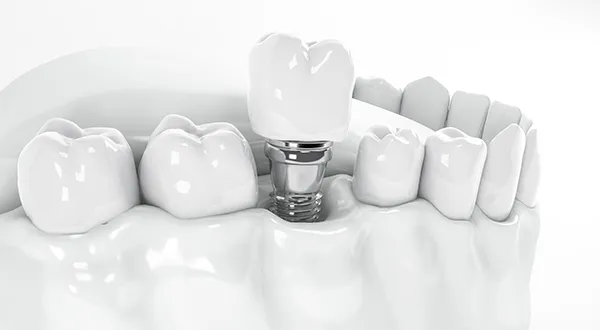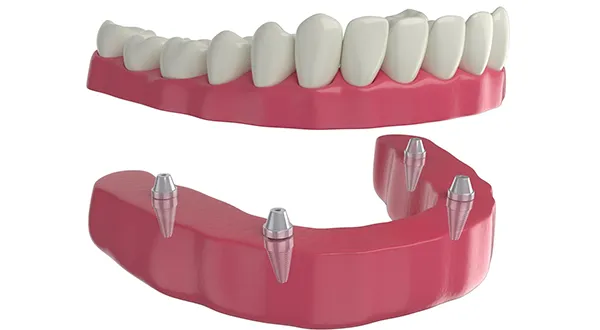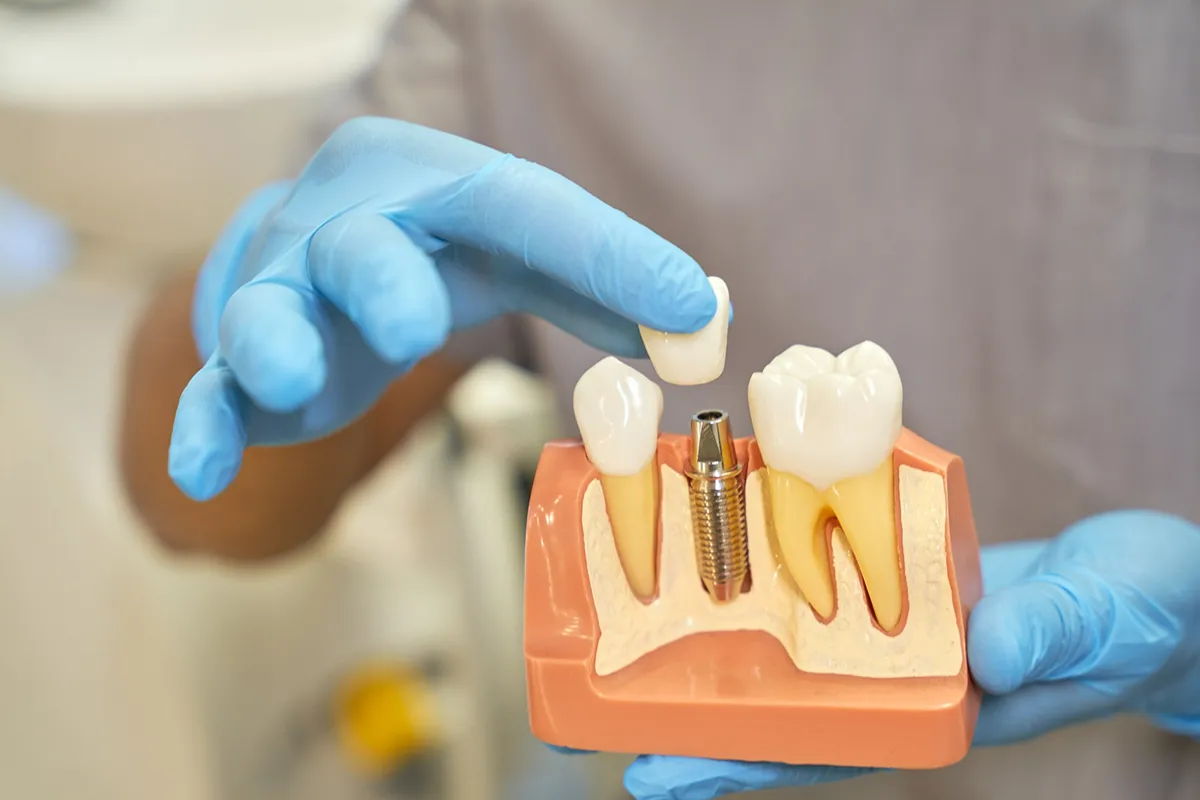Dental implants represent a groundbreaking solution in modern dentistry. They address the challenges of missing teeth with remarkable precision and longevity. Represent a groundbreaking solution in modern dentistry. They address the challenges of missing teeth with remarkable accuracy and longevity. These small yet mighty devices serve as artificial tooth roots, anchoring prosthetics in a way that goes beyond cosmetic enhancement, restoring both function and confidence.
Investing in dental implants is an intelligent decision for your oral health in the long run. Understanding the types and their applications contributes to the success and longevity of your implant-supported restorations, providing lasting benefits for your smile.
Dental implants come in different types, each with its job. The most common ones, called endosteal implants, go into your jawbone. If you don’t have enough jawbone, there’s another type, called subperiosteal implants, which sit on or above your jawbone. Zygomatic implants are a bit different; they go into your cheekbone. Other dental implant types, i.e., all-on-4 implants, use just four posts to support a whole set of teeth, and mini implants are smaller and work well if you have less jawbone. Knowing about these types helps you and your dentist pick the best one that fits your teeth situation. You’ll learn more about these types and their applications in this blog. Choosing the right solution for a confident smile will be easier when you know more about your oral health. So, let’s get started.
Different Implant Types:
Understanding the different implant types is crucial because it allows for selecting the most appropriate implant type based on factors such as available bone, the degree of tooth loss, and personal choice. Each class has its unique advantages, uses, and applications. The success rate of dental implants is usually very high, with success rates often reported to be over 95% in well-planned and adequately executed cases. Let’s explore different implantology options so that you can discuss them with your dentist beforehand.
Endosteal Implants:
Endosteal implants stand as the backbone of modern dentistry, offering a groundbreaking solution for tooth replacement. Their surgical placement ensures a stable and durable foundation for various dental restorations, which naturally integrate with the surrounding bone for a secure and lasting bond.
The advantages of endosteal implants go beyond their structural integrity. They serve as an ideal solution for individuals seeking long-term stability in tooth replacement. The direct integration with the jawbone enhances not only the strength of the implant but also the overall functionality of the dental restoration. Additionally, endosteal implants offer a natural and aesthetically pleasing appearance.
Endosteal implants are customized for people with sufficient jawbone density and seek a permanent, dependable option for replacing missing teeth. If you want a prosthetic anchor that imitates the natural structure of teeth and offers a secure, long-lasting solution, then endosteal implants might be the perfect choice.

Subperiosteal Implants:
Subperiosteal implants represent a personalized approach to overcoming the hurdles of inadequate jawbone. These implants consist of metal frameworks meticulously crafted on or above the jawbone. Their tailor-made design sets them apart, ensuring a snug fit that caters to the unique contours of an individual’s jaw.
Crafting a solution begins with a detailed 3D model of the patient’s jaw, capturing the intricacies of its structure. This model guides the creation of a customized metal framework. During the surgical phase, this framework is precisely placed on or above the jawbone, securing itself in position as the gums undergo the natural healing process.
Subperiosteal implants offer hope for those dealing with insufficient natural jawbone. The custom-fit nature of these implants eliminates the need for extensive bone grafting procedures, providing stable and reliable support for replacement teeth. This advantage not only accelerates the treatment but also simplifies the overall process.
Ideal candidates for subperiosteal implants are individuals confronting the challenges of inadequate jawbone for traditional implants. It includes those who prefer to sidestep the complexities and extended recovery associated with bone grafting. If you find yourself in this category, subperiosteal implants could be the personalized solution you’ve been seeking.
“Selecting a dental implant type is more than a choice; it’s an investment in a smile that looks great, feels natural and stands the test of time.”
Zygomatic Implants:
Zygomatic implants redefine the landscape of dental restoration with their distinctive approach. These implants, longer than their traditional counterparts, anchor themselves not in the jawbone but the cheekbone, known as the zygomatic bone. This unique characteristic empowers them to provide unparalleled stability for dental restorations.
The process of using zygomatic implants requires precise strategic planning. Longer implants are carefully inserted into the cheekbone, bypassing the need for extensive bone grafting procedures. This streamlined approach not only ensures stability but also accelerates the overall dental restoration process.
Zygomatic implants are ideal for individuals grappling with significant jawbone loss and offer efficiency and stability. The procedure stands out for its swiftness compared to traditional implant surgeries.
Zygomatic implants cater to a specific group of individuals, those facing challenges with traditional implants due to extensive jawbone loss. If you seek a more efficient solution without the need for extensive procedures or if you have experienced difficulties with bone grafting, zygomatic implants may be the transformative answer you’ve been searching for.
All-on-4 Dental Implants:
The all-on-four dental implants provide an innovative solution for comprehensive dental restoration. This approach involves placing four implants to support an entire upper or lower teeth arch. The design of these implants ensures maximum efficiency and effectiveness in restoring a complete set of teeth.
The streamlined procedure of all-on-4 implants focuses on strategic precision. Four implants are strategically positioned in denser jaw areas, reducing the overall number needed for comprehensive dental restoration. It speeds up the treatment procedure and minimizes the effect on the patient.

The advantages of All-on-4 implants extend beyond efficiency. This approach is cost-effective and ensures a quicker procedure with fewer implants. It offers a feasible solution for individuals seeking a comprehensive dental restoration while minimizing the financial burdens associated with a more significant number of implants.
All-on-4 dental implants cater to a broad spectrum of individuals seeking a balance between efficiency and effectiveness in their dental restoration journey. If you are looking for an accessible and efficient solution to replace an entire set of upper or lower teeth and prefer a streamlined approach, you may be an ideal candidate for all-on-4 implants.
Mini Implants:
Mini implants distinguish themselves in the landscape of dental innovation. Their reduced size, compared to traditional implants, is a defining characteristic. These dental implants offer precise stabilization and support to dentures, ensuring comfortable and secure fitting.
The process of using mini implants is known for its simplicity. Due to their reduced size, the placement process is less invasive. The mini dental implants are directly inserted into the jawbone, often enhancing the comfort of denture wearers. This streamlined approach minimizes the impact on the surrounding tissue.
Despite their tiny size, these dental implants have significant benefits. They are particularly well-suited for individuals with little jawbone mass and offer a less invasive option than traditional implant procedures. Mini implants enhance retention and comfort for denture wearers, providing a practical solution for stabilizing removable prosthetics.
These implants cater to individuals facing the challenge of limited jawbone mass. If you seek a less invasive option for stabilizing dentures, mini implants may be the optimal solution. These dentures provide more stability and comfort without requiring implant procedures.
Conclusion:
Understand the basics of various implantology options, like their features and benefits, and team up with dental pros to find the perfect fit for your unique needs. So, whether you’re making decisions for yourself or a loved one, dental implants pave the way to a future where restored smiles are not just a reality but are vibrant, natural, and uniquely yours.
Contact your Pinole dentists, Dr. Azadeh Hosseini, DDS, and Dr. Ghazal Hosseini, DDS, at Top Pinole Dental to learn more about different types of Dental Implants.
Resource:
Dental Bridge Vs. Implant: Understanding the Differences
*This media/content or any other on this website does not prescribe, recommend, or prevent any treatment or procedure. Therefore, we highly recommend that you get the advice of a qualified dentist or other medical practitioners regarding your specific dental condition.*
1500 Tara Hills Dr., Suite 104A, Pinole, CA 94564
Monday – Saturday 8:00 AM to 5:00 PM
